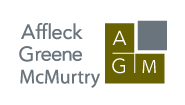Shareholder/director not liable for “presumptive benefit” or “duty to explain”
Major shareholders and directors of corporation are not liable for torts of the corporation because they “presumptively benefit” from those torts, or because of a duty to be aware of, explain, and correct, the tortious behaviour, the Court of Appeal recently held in A-C-H International v. Royal Bank of Canada.[1]
The court also re-affirmed the principle that “law suits must be decided within the boundaries of the pleadings”.[2]
$1.7 million stolen through forged endorsements
The facts of the case are straightforward. A-C-H International (“ACH”) was a joint venture between two companies, Ambler-Courtney Limited (“ACL”) and Hub Equipment Ltd. Endorsements were forged on about $1.7 million in cheques payable to A-C-H International, enabling them to be paid to Ambler-Courtney Properties Inc (“ACP”). The funds were then transfered to ACL. When it discovered the forgeries, ACH sued Royal Bank, ACL, ACP, and several individuals, including two shareholder/directors of ACL, Brian Ambler and William Courtney. Royal Bank cross-claimed in conspiracy against the other defendants.
The trial dealt with Royal Bank’s cross-claim against Mr. Courtney. ACH had obtained summary judgment against Royal Bank; Mr. Ambler had settled; and neither ACL nor ACPL were in a position to return the money. After Royal Bank closed its case, which like its pleadings, was limited to conspiracy, Mr. Courtney moved for non-suit instead of calling evidence.
Trial judge allows action in conversion
Pitt J. dismissed Royal Bank’s conspiracy claim. However, he then found Mr. Courtney liable for conversion because, as a shareholder of ACL, he presumptively benefited indirectly from the money ACL improperly obtained. In addition, he held that because ACL had been involved in a fraud, and its only directors were Messrs. Courtney and Ambler, the corporate veil should be pierced and liability fixed upon Mr. Courtney.[3]
Trial judge cannot base judgment on theory that is not pleaded or argued
In allowing Mr. Courtney’s appeal, the Court of Appeal re-affirmed that it is improper for a trial judge to decide a case based on a cause of action or theory of liability that is neither pleaded nor argued. Theories of liability must be tested in the “crucible of the adversarial process” to determine whether they are reliable;[4] here, “we do not know how the trial judge’s conversion theory would have fared, had it been exposed to the rigours of the adversarial process”. The court also pointed to the unfairness to Mr. Courtney, who, believing the case he had to meet was conspiracy, decided not to call a defence and moved instead for non-suit.
Court of Appeal rejects “presumptive benefit” and “duty to explain” theories
The court then expressly disagreed with Pitt J.’s substantive reasons for fixing liability upon Mr. Courtney.
The court expressed “serious reservations” Pitt J.’s conclusion that as a major shareholder, Mr. Courtney obtained a “presumptive” benefit from ACL’s conversion, despite the lack of any evidence showing such benefit. The court noted that there is no authority to support this concept.
The court also disagreed with Pitt J.’s view that Mr. Courtney had an evidentiary burden to explain why he should be allowed to keep the presumptive benefit and not repay the money taken by ACL. The court rejected the notion that a major shareholder or director is, by that fact alone, taken to be aware of a fraud committed by the company and thus comes under a duty to explain or correct the company’s behaviour. The court commented:
¶ 25 In essence, in the absence of any evidence, the trial judge concluded that, as a signing officer, director and major shareholder of ACPI and ACL, the appellant should have known what was going on and that he should have done something to correct the problem. I would not say there can never be a case where a duty to explain or a duty to act in such a fashion might arise. I would be reluctant to conclude, however, that such a duty, or duties, could be founded solely upon the fact that an individual happens to be a shareholder (even a major shareholder) and/or an officer and director of a corporation.
Finally, the court re-affirmed that the principle that the corporate veil will not be pierced simply because there is a major, or even controlling shareholder. The fact that a fraud was committed does not change the test to be met, which is that the shareholder or director must have “exercised clear domination and control over the corporations in directing the wrongful things to be done”, and that his or her conduct must itself have been “akin to fraud, dishonesty or want of authority and constituted a tort in itself”.
Published October 18, 2005
[1] [2005] O.J. No. 2048 ( C.A. )
[2]Rodaro v. Royal Bank of Canada (2002), 59 O.R. (3d) 74 ( C.A. ) at ¶62
[3] [2003] O.J. No. 5043
[4]Rodaro v. Royal Bank of Canada (2002), 59 O.R. (3d) 74 ( C.A. ) at ¶62











